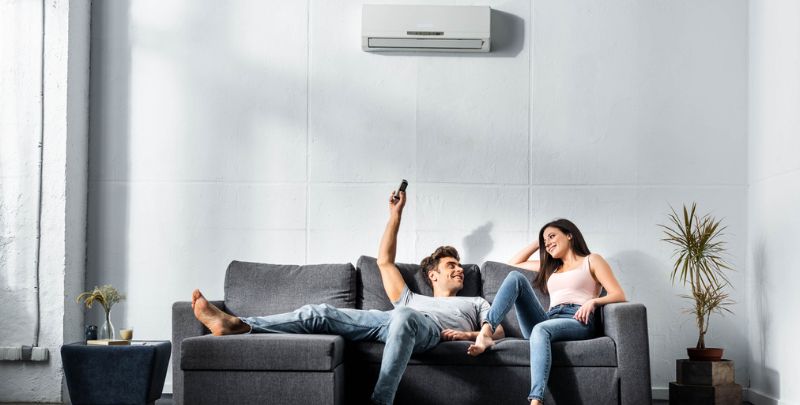
Taking Care of Home Humidity
Are you sick of living in a sticky, humid atmosphere inside your house? Humidity can leave you feeling hot, sweaty, irritable and just plain uncomfortable.
Excess moisture can not only affect your health, but can lead to problems with mould and mildew around the home. Thankfully, there are a number of simple ways of reducing moisture in the air and making your living spaces more comfortable.
Most homes feature devices that are meant for this very purpose. Meanwhile, there are other solutions you can introduce to reduce or improve moisture problems.
How Do I Know If It’s Too Humid?
Now, if you live somewhere like Queensland, you know all about humidity. The air is damp and full of water vapour. It’s tough to escape the heavy air at times. Some Australians get used to it, though, and it’s barely noticeable.
So, you might be asking yourself, when is it too humid? Well, apart from the heavy air and that sweaty, uncomfortable feeling, the simplest way to test moisture levels is with a hygrometer.
A hygrometer is a temperature and humidity gauge. It is inexpensive and can be bought at your local hardware store. If the humidity is higher than 50% inside, you need to reduce the levels. That much moisture in the air will do plenty of damage to walls and furniture with long term exposure.
Use a Dehumidifier to Reduce Moisture
It might be time to invest in a dehumidifier. This is one of the simplest solutions for lowering indoor humidity levels throughout your home.
The advantage of a dehumidifier is that they are designed for that specific purpose and are portable. They do more than reducing excess moisture.
Along with improving your comfort, a dehumidifier can reduce airborne allergens and help prevent the build up of mould in the home.
It can also cool your rooms, improve air circulation and reduce your air conditioner use.

Benefit From Your Air Conditioning
A well-functioning air conditioner essentially acts as a dehumidifier in the home.
As an air conditioner cools the room, it also removes moisture from the air. Essentially it introduces cooler air while removing warm, humid air.
Keep your air conditioner tuned up and regularly change the filter so that it’s operating at top capacity.
It’s also important to set your AC thermostat to Auto rather than On. The On setting does not allow the air conditioner to dehumidify your home properly.
Ventilation is a Breath of Fresh Air
Everyday activities in your home can cause the humidity levels to rise.
Ventilation is the key to boosting your indoor air quality and keeping moisture levels down.
Whether you’re cooking over a hot stove top or showering, use your ventilation and exhaust fans to reduce excess humidity in a room naturally.
While the habit is to turn them off straight after use, try keeping exhaust fans on a little longer to clear the air.
Everyone loves hot showers, but they can contribute to home humidity levels. To help, try taking cooler showers.
This is not to suggest you should start taking ice cold showers, but just by lowering the temperature of your showers by a few degrees, there will be less steam in the air and you will reduce humidity.
Fix Leaky Pipes and Blocked Gutters
A number of faults inside and outside the home can contribute to moisture buildup.
Leaking pipes and taps only exacerbate the problem of humidity.
Fix any leaks you have, and exposed pipes should be wrapped in insulators to keep condensation from forming.
Blocked gutters can cause indoor water leaks, which add moisture to the air. It’s important to clean your gutters and your downspout should be directed away from your home.

Try Solar Power for Laundry
Unless you’re using a dryer – which doesn’t suit all garments – try hanging your clothes outside to dry.
If you’re drying clothes on a rack inside, particularly in summer, this will contribute to air moisture.
Why not use the clothesline and the natural power of the sun? Using the clothesline is not always possible, but even in winter there are plenty of days you can use the great outdoors for drying.
Green Thumb Solutions to Humidity
Indoor plants are a lovely way to decorate the home, but they do release their fair share of moisture.
If you’ve got a number of indoor plants, this can contribute to indoor humidity levels. Try keeping plants in a well-ventilated room or move them outside.
Or perhaps just try opening a window.
This isn’t always ideal, and is not recommended while running your air conditioner – that’s a waste of money. The cooled air will be pulled outside and warm air will be allowed in, which defeats the purpose of running the AC.
But on some days the natural ventilation of opening a window will lower humidity levels noticeably.
To conclude, the problems of too much moisture in the air are obvious, especially for those in humid climates. If you can reduce humidity indoors, your home is going to be a healthier environment for you and your family.
Please note: This information is provided for advice purposes only. Regulations differ from state to state, so please consult your local authorities or an industry professional before proceeding with any work. See our Terms & Conditions here.


